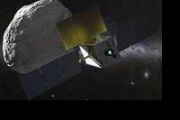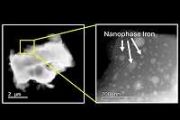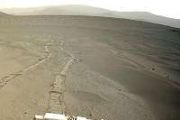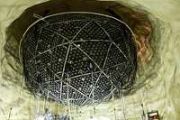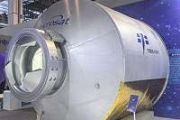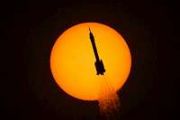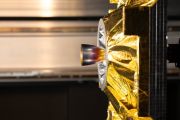
Copernical Team
Rocket Lab's Lunar Photon completes 3rd orbit raising maneuver for CAPSTONE Moon mission
 Rocket Lab USA, Inc. (Nasdaq: RKLB) reports that its Lunar Photon spacecraft has successfully completed the third of seven planned orbit raising maneuvers, bringing the CAPSTONE spacecraft closer to the Moon.
Owned and operated by Advanced Space on behalf of NASA, the Cislunar Autonomous Positioning System Technology Operations and Navigation Experiment (CAPSTONE) CubeSat will be the first
Rocket Lab USA, Inc. (Nasdaq: RKLB) reports that its Lunar Photon spacecraft has successfully completed the third of seven planned orbit raising maneuvers, bringing the CAPSTONE spacecraft closer to the Moon.
Owned and operated by Advanced Space on behalf of NASA, the Cislunar Autonomous Positioning System Technology Operations and Navigation Experiment (CAPSTONE) CubeSat will be the first Successful high-speed flight experiments with new sounding rocket configuration
 Reusable launch systems are exposed to high dynamic and thermo-mechanical loads during their return to Earth. The German Aerospace Center has now successfully tested high temperature structures, advanced measurement techniques and design tools for the re-entry phase with the STORT (Schlusseltechnologien fur hochenergetische Ruckkehrfluge von Tragerstufen - key technologies for high-energy return
Reusable launch systems are exposed to high dynamic and thermo-mechanical loads during their return to Earth. The German Aerospace Center has now successfully tested high temperature structures, advanced measurement techniques and design tools for the re-entry phase with the STORT (Schlusseltechnologien fur hochenergetische Ruckkehrfluge von Tragerstufen - key technologies for high-energy return Historic Mars mission completes all preset tasks
 Tianwen 1, China's historic Mars mission, has accomplished all its preset scientific tasks, according to the China National Space Administration.
The administration said on Wednesday that the Tianwen 1 mission orbiter has obtained medium-definition images of the entire planet, marking the completion of its scientific goals.
The craft has circled Mars 1,344 times to date and will cont
Tianwen 1, China's historic Mars mission, has accomplished all its preset scientific tasks, according to the China National Space Administration.
The administration said on Wednesday that the Tianwen 1 mission orbiter has obtained medium-definition images of the entire planet, marking the completion of its scientific goals.
The craft has circled Mars 1,344 times to date and will cont Bernese researchers simulate defense of the Earth
 NASA's Double Asteroid Redirection Test (DART) mission is the world's first full-scale planetary defense test against potential asteroid impacts on Earth. Researchers of the University of Bern and the National Centre of Competence in Research (NCCR) PlanetS now show that instead of leaving behind a relatively small crater, the impact of the DART spacecraft on its target could leave the asteroid
NASA's Double Asteroid Redirection Test (DART) mission is the world's first full-scale planetary defense test against potential asteroid impacts on Earth. Researchers of the University of Bern and the National Centre of Competence in Research (NCCR) PlanetS now show that instead of leaving behind a relatively small crater, the impact of the DART spacecraft on its target could leave the asteroid Falling stardust, wobbly jets explain blinking gamma ray bursts
 A Northwestern University-led team of astrophysicists has developed the first-ever full 3D simulation of an entire evolution of a jet formed by a collapsing star, or a "collapsar."
Because these jets generate gamma ray bursts (GRBs) - the most energetic and luminous events in the universe since the Big Bang - the simulations have shed light on these peculiar, intense bursts of light. Their
A Northwestern University-led team of astrophysicists has developed the first-ever full 3D simulation of an entire evolution of a jet formed by a collapsing star, or a "collapsar."
Because these jets generate gamma ray bursts (GRBs) - the most energetic and luminous events in the universe since the Big Bang - the simulations have shed light on these peculiar, intense bursts of light. Their Webb telescope: NASA to reveal deepest image ever taken of universe

NASA administrator Bill Nelson said Wednesday the agency will reveal the "deepest image of our universe that has ever been taken" on July 12, thanks to the newly operational James Webb Space Telescope.
"If you think about that, this is farther than humanity has ever looked before," Nelson said during a press briefing at the Space Telescope Science Institute in Baltimore, the operations center for the $10 billion observatory that was launched in December last year and is now orbiting the Sun a million miles (1.5 million kilometers) away from Earth.
NASA mission aims to study ice and water on the moon's surface

In the fall of 2023, a U.S. rover will land at the south pole of the moon. Its mission: to explore the water ice that scientists know lurks within the lunar shadows, and which they believe could help sustain humans who may one day explore the moon or use it as a launching pad for more distant space exploration.
NASA recently selected Kevin Lewis, an associate professor in the Krieger School's Department of Earth and Planetary Sciences who has also worked on missions on Mars, as a co-investigator of the mission. Using part of the rover's navigational system, he plans to explore the moon's subsurface geology from his office in Olin Hall.
"I have been on other rover missions, but on Mars, so I'm a little bit new to the moon," Lewis said. "We're going to see into shadows that have never seen the sun, let alone been seen by humans. So it could be a very different type of surface than we've seen in other photos of the surface of the moon."
Drier than a desert
Swarm of tiny swimming robots could look for life on distant worlds

Someday, a swarm of cellphone-size robots could whisk through the water beneath the miles-thick icy shell of Jupiter's moon Europa or Saturn's moon Enceladus, looking for signs of alien life.
EGNOS technology for Africa – ESA signs deal with ASECNA
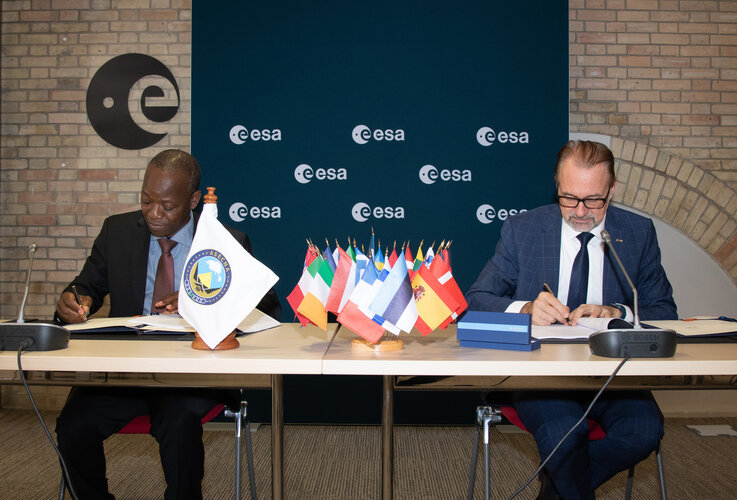
European technology that allows satellite navigation signals to safely guide aircraft down for landing in the majority of Europe’s airports will now be put to use across Africa and the Indian Ocean. ASECNA, the Agency for Air Navigation Safety in Africa and Madagascar, and ESA today signed an agreement to deploy a Satellite-based Augmentation System (SBAS) across a service region of more than 16.5 million sq. km, one and a half times the size of Europe’s coverage area.
NASA, Rocket Lab launch orbiter to help pave way for astronauts' return to moon
 NASA's CAPSTONE mission spacecraft lifted off into space Tuesday morning on a mission to orbit the moon, moving scientists closer to returning astronauts.
The unmanned lunar orbiter took off on top of a Rocket Lab booster from New Zealand's Mahia Peninsula. The mission was originally set for Monday but was delayed to make a final systems check.
The Cislunar Autonomous Positioning
NASA's CAPSTONE mission spacecraft lifted off into space Tuesday morning on a mission to orbit the moon, moving scientists closer to returning astronauts.
The unmanned lunar orbiter took off on top of a Rocket Lab booster from New Zealand's Mahia Peninsula. The mission was originally set for Monday but was delayed to make a final systems check.
The Cislunar Autonomous Positioning 
